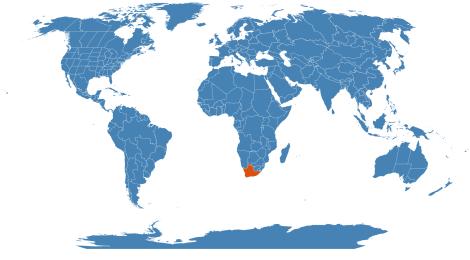Accession Data
Agapanthus africanus
Common Name: Lily of the Nile
Family: Amaryllidaceae
Country of Origin: SW. Cape Prov.
Description: To 20 inches, evergreen; leaves 8-18, persistent, linear-lanceolate, to 1/2" wide; umbel 12-30 flowered; flowers funnelform, deep violet-blue, to 1 1/2 inches long. Often confused with A. orientalis, but less commonly cultivated; cultivars listed under this species generally are referable to A. orientalis
Uses: Medicinal: A plant of fertility and pregnancy – used by South African traditional healers as phytomedicine to treat ailments related to pregnancy and to facilitate labor. Orally or rectally, as a decoction, to ensure an easy delivery and a healthy child. It may facilitate expulsion of the placenta and augment uterine contractions. Roots worn as necklace for easy childbirth and fertility. Decoction used in washing newborn babies; also, an infant tonic.
Considered an aphrodisiac, used for impotency and barrenness.
Leaves used around wrists to bring down fever. From Philippine Medicinal Plants online.(ref?)
Accession Data
USDA Zone: 9-10
Accession #: 198501085
Accession Date: 1985-12-31 00:00:00
Bloom Status: 🪴 Not Flowering
Location: 2109
Quantity: 2
Source: Unknown
Classification
Division: Magnoliophyta
Class: Liliopsida
Subclass: monocots
Order: Asparagales
Family: Amaryllidaceae
SubFamily: Agapanthoideae
Flowering Data:
This accession has been observed in bloom on:| Year | Jan | Feb | Mar | Apr | May | Jun | Jul | Aug | Sep | Oct | Nov | Dec | ||||||||||||||||||||||||||||||||||||||||
|---|---|---|---|---|---|---|---|---|---|---|---|---|---|---|---|---|---|---|---|---|---|---|---|---|---|---|---|---|---|---|---|---|---|---|---|---|---|---|---|---|---|---|---|---|---|---|---|---|---|---|---|---|
| 2025 | ||||||||||||||||||||||||||||||||||||||||||||||||||||
| 2024 | ||||||||||||||||||||||||||||||||||||||||||||||||||||
| 2023 | ||||||||||||||||||||||||||||||||||||||||||||||||||||
| 2022 | ||||||||||||||||||||||||||||||||||||||||||||||||||||
| 2021 | ||||||||||||||||||||||||||||||||||||||||||||||||||||
| 2020 | ||||||||||||||||||||||||||||||||||||||||||||||||||||
| 2019 | ||||||||||||||||||||||||||||||||||||||||||||||||||||
| 2018 | ||||||||||||||||||||||||||||||||||||||||||||||||||||
| 2017 | ||||||||||||||||||||||||||||||||||||||||||||||||||||
| 2016 | ||||||||||||||||||||||||||||||||||||||||||||||||||||
| 2015 | ||||||||||||||||||||||||||||||||||||||||||||||||||||
| 2014 | ||||||||||||||||||||||||||||||||||||||||||||||||||||
| 2013 | ||||||||||||||||||||||||||||||||||||||||||||||||||||
| 2012 | ||||||||||||||||||||||||||||||||||||||||||||||||||||
| 2011 | ||||||||||||||||||||||||||||||||||||||||||||||||||||
| 2010 | ||||||||||||||||||||||||||||||||||||||||||||||||||||
| 2009 | ||||||||||||||||||||||||||||||||||||||||||||||||||||
| 2008 | ||||||||||||||||||||||||||||||||||||||||||||||||||||
| 2007 | ||||||||||||||||||||||||||||||||||||||||||||||||||||
| 2006 | ||||||||||||||||||||||||||||||||||||||||||||||||||||
| 2005 | ||||||||||||||||||||||||||||||||||||||||||||||||||||
| 2004 | ||||||||||||||||||||||||||||||||||||||||||||||||||||
References
- Plants For A Future. Last accessed on Wednesday, 04 December, 2019.
- Angiosperm Phylogeny Website at MoBot. Last accessed on Tuesday, 03 December, 2019.
- WCSP (2019). World Checklist of Selected Plant Families. Facilitated by the Royal Botanic Gardens, Kew. Last accessed on Wednesday, 04 December, 2019.
Images

